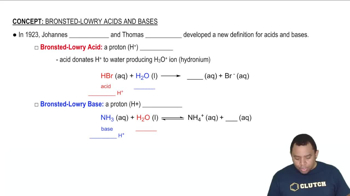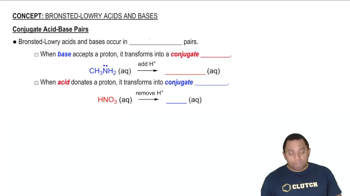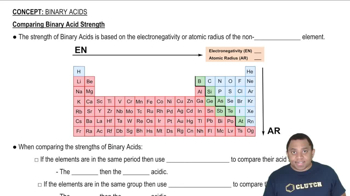Here are the essential concepts you must grasp in order to answer the question correctly.
Acid-Base Theory
Acid-base theory explains the behavior of acids and bases in chemical reactions. According to the Brønsted-Lowry theory, acids are proton donors and bases are proton acceptors. The strength of a base is determined by its ability to accept protons, which is influenced by the stability of the conjugate acid formed after the base accepts a proton.
Recommended video:
Bronsted-Lowry Acid-Base Theory
Conjugate Acid Stability
The strength of a base is often related to the stability of its conjugate acid. A more stable conjugate acid indicates a stronger base, as the equilibrium will favor the formation of the base. Factors affecting stability include electronegativity, resonance, and inductive effects, which can help predict the relative strengths of different bases.
Recommended video:
Conjugate Acid-Base Pairs
Comparative Base Strengths
To compare the strengths of the acetate ion (CH3COO-) and the hypochlorite ion (ClO-), one must consider their conjugate acids: acetic acid (CH3COOH) and hypochlorous acid (HClO). The relative acidity of these acids can be assessed using pKa values; a higher pKa indicates a weaker acid and thus a stronger conjugate base. This comparison allows for determining which ion is the stronger base.
Recommended video:
Comparing Binary Acid Strength
 Verified step by step guidance
Verified step by step guidance


